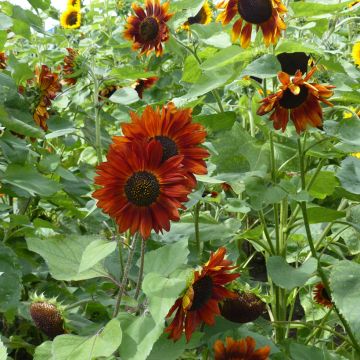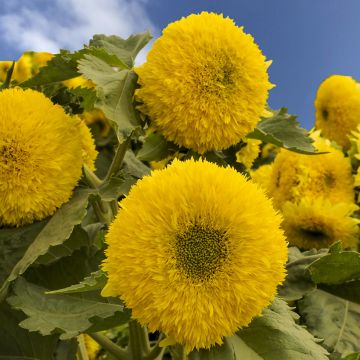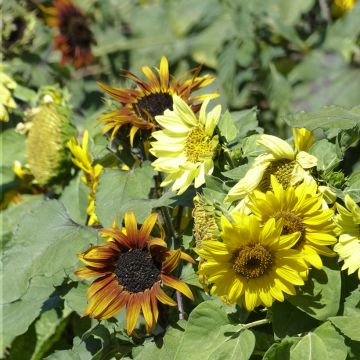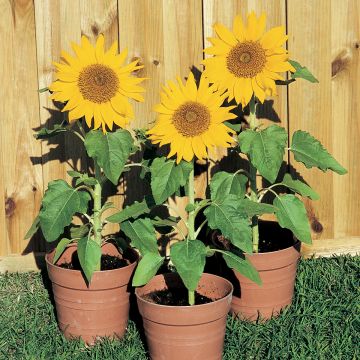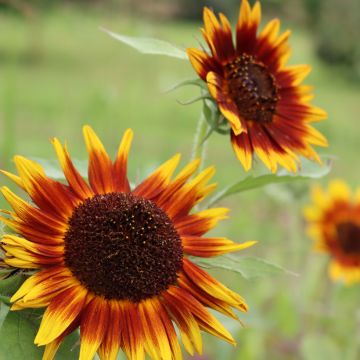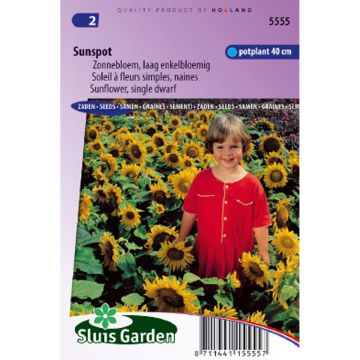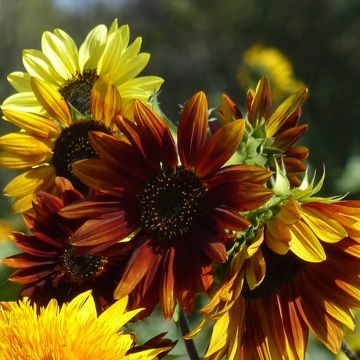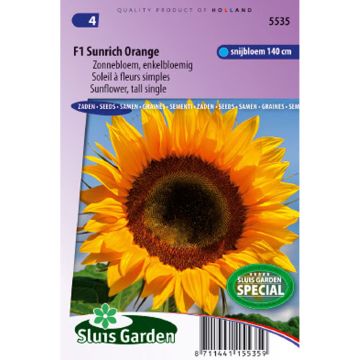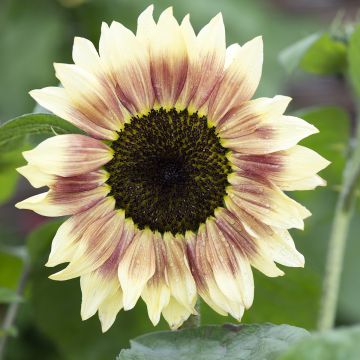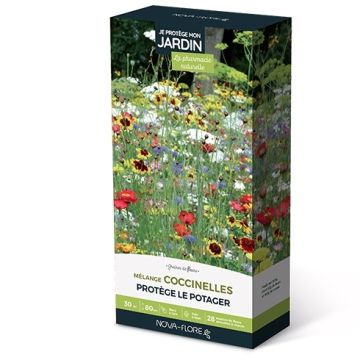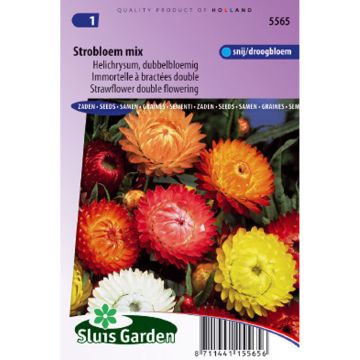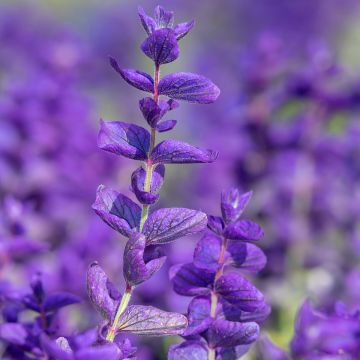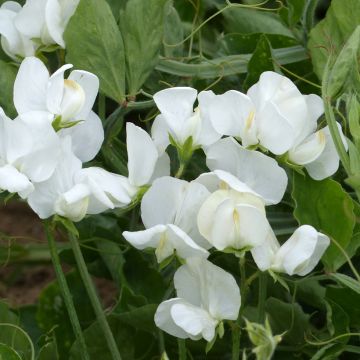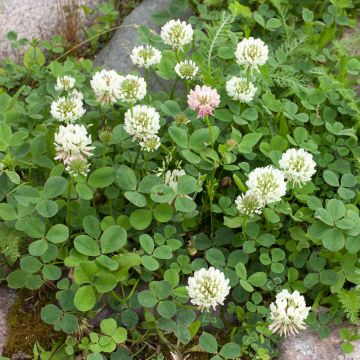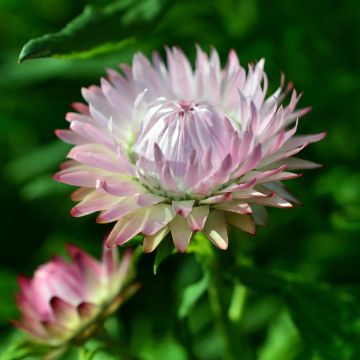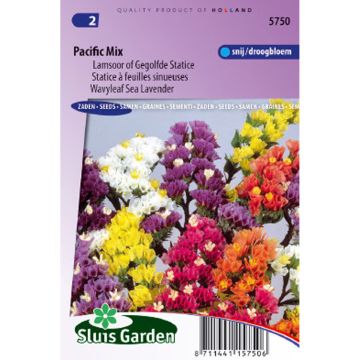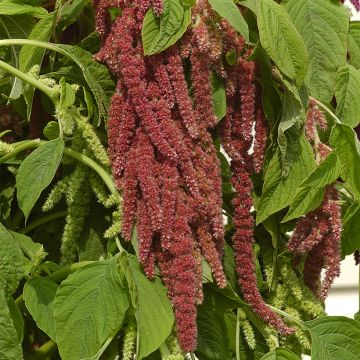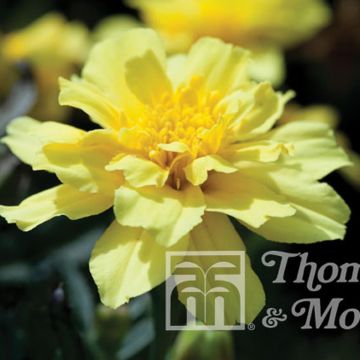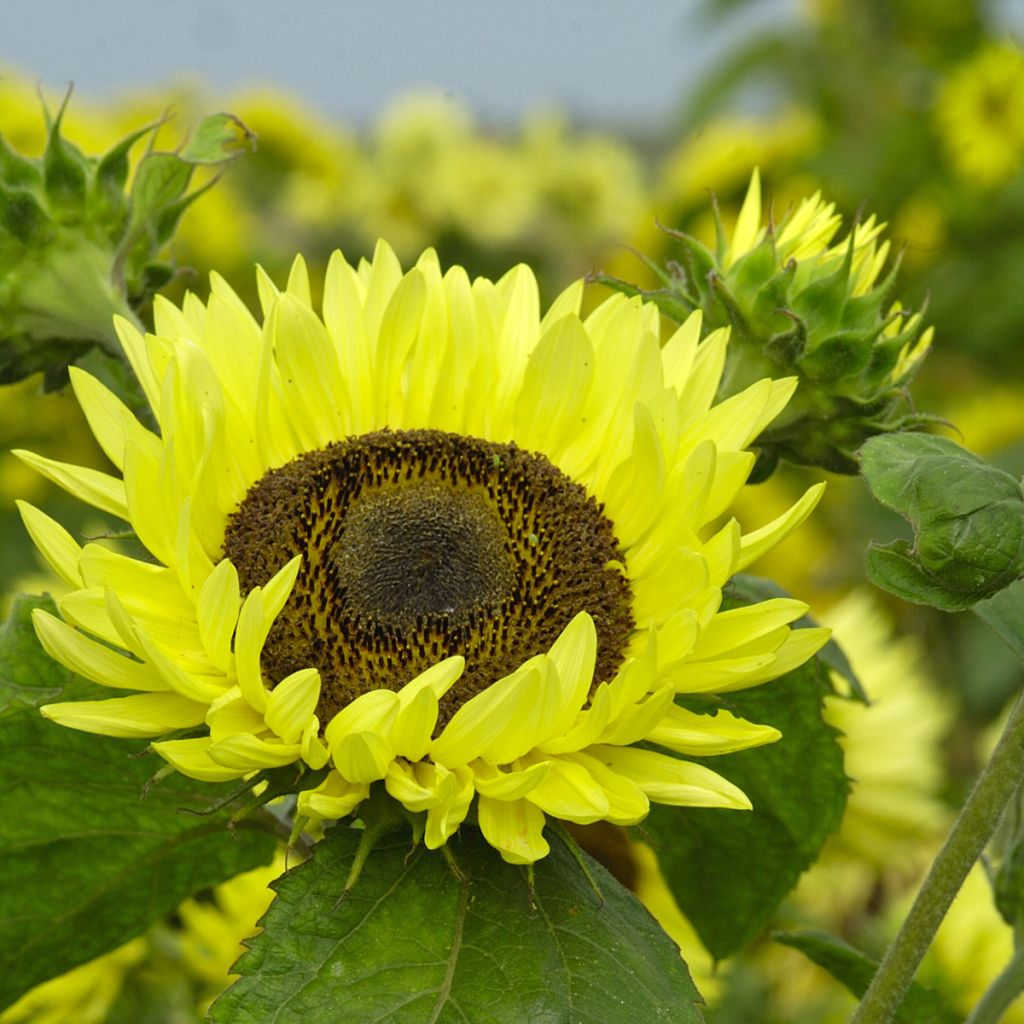

Helianthus annuus 'Garden Statement'
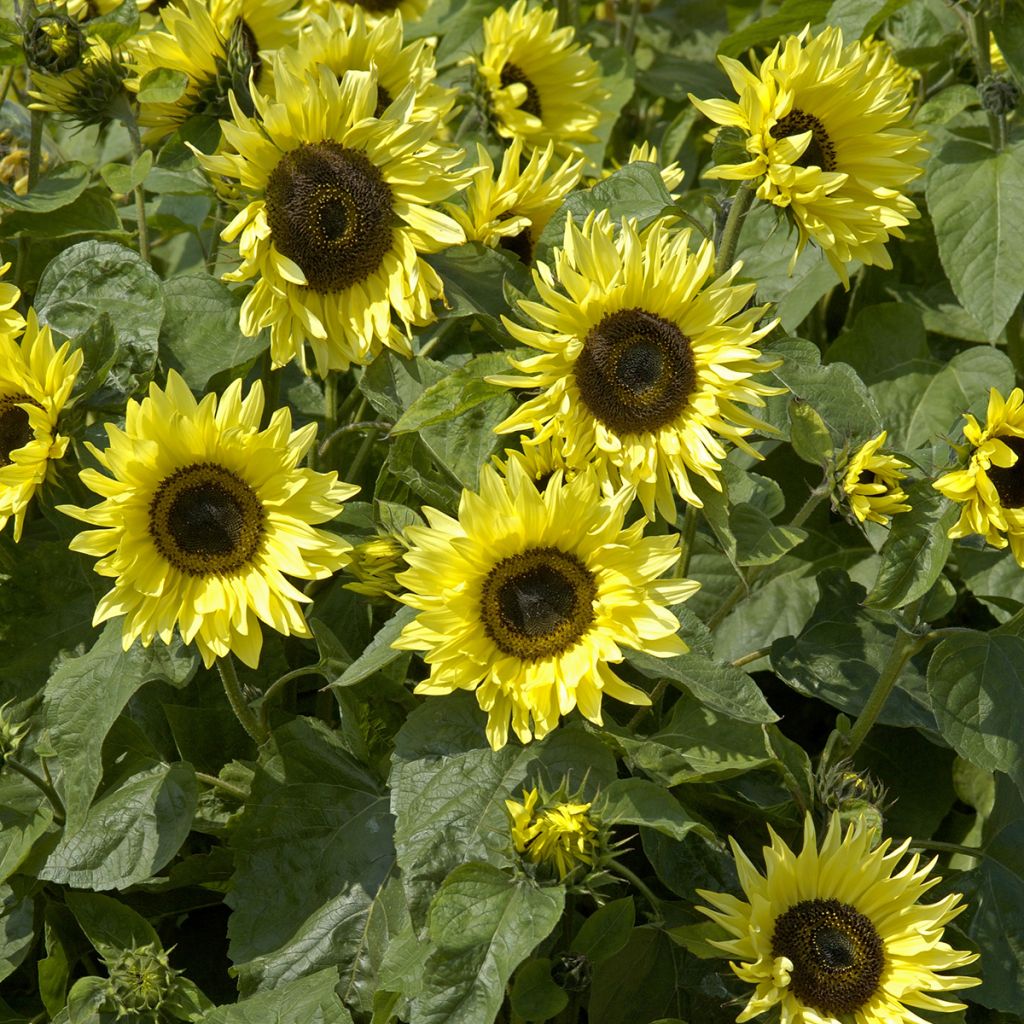

Helianthus annuus 'Garden Statement'
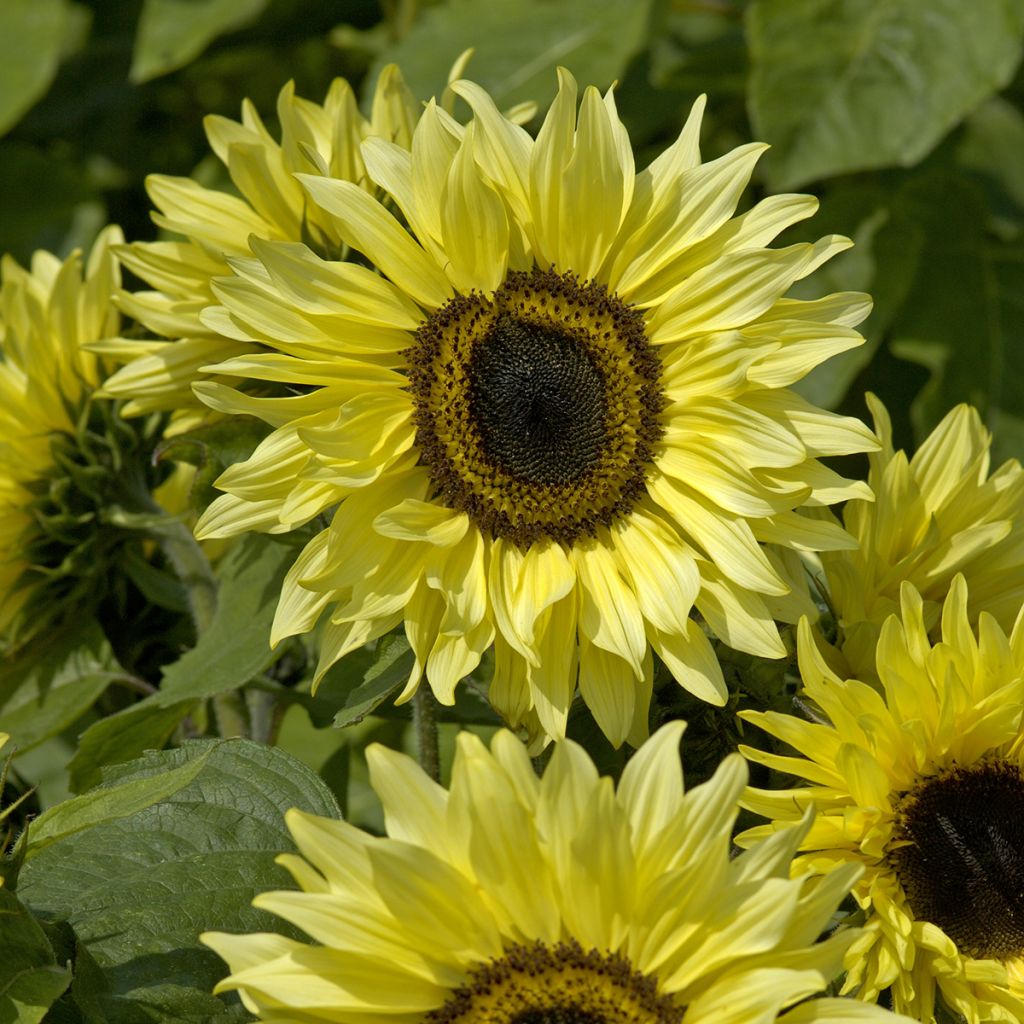

Helianthus annuus 'Garden Statement'
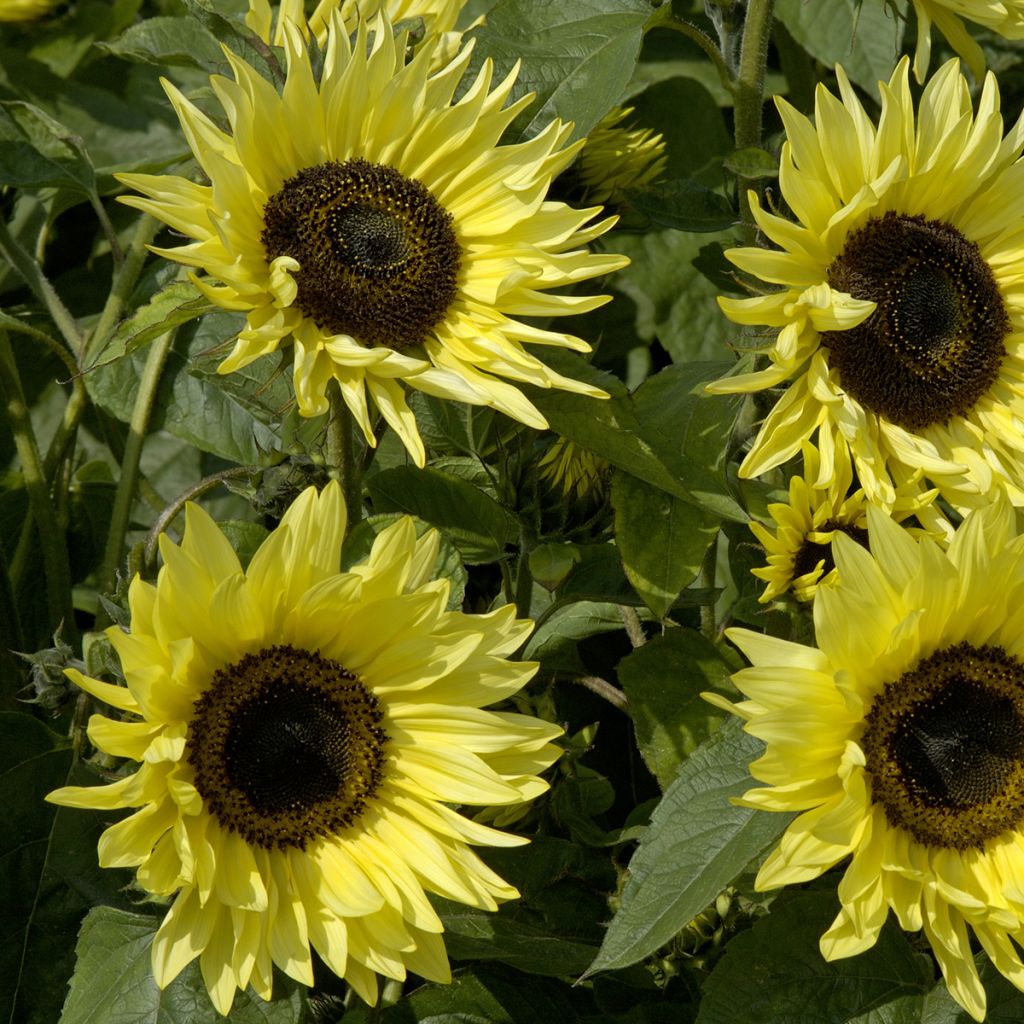

Helianthus annuus 'Garden Statement'
Helianthus annuus 'Garden Statement'
Helianthus annuus Garden Statement
Sunflower, Common Sunflower
This item cannot be shipped to the selected country
Dispatch by letter from €3.90
More information
Schedule delivery date,
and select date in basket
This plant carries a 6 months recovery warranty
More information
We guarantee the quality of our plants for a full growing cycle, and will replace at our expense any plant that fails to recover under normal climatic and planting conditions.
Seed-only orders are dispatched by sealed envelope. The delivery charge for seed-only orders is €3.90.
Does this plant fit my garden?
Set up your Plantfit profile →
Description
The 'Garden Statement' Helianthus annuus, also known as Garden Sunflower, is an annual plant that quickly forms a very tall plant, 1.80m (6ft) for this variety, supported by strong, highly branched stems. 'Garden Statement' offers flowers that are not golden yellow, but lemon yellow, ultra-vibrant. Double, they create a strong contrast with their almost black central disk. In the garden, they can be seen from afar, given their tall height and especially this sun-reflecting colour.
Helianthus annuus is none other than the famous sunflower cultivated on a large scale for the oil extracted from its seeds. This large annual plant from the Asteraceae family, domesticated by humans for a long time, has a controversial origin, but it is native to the American continent. 'Garden Statement', shorter than the species, still reaches a height of 1.80m (6ft) with a spread of 75cm (30in). Its very bright flowers are semi-double to double, with a lemon yellow colour that strongly contrasts with their large, dark brown, almost black central disk. They resemble giant daisies and measure 15 to 20cm (6 to 8in) in diameter. The main stem branches out and bears a flower at each end. The branches are long enough to be harvested independently and used to create magnificent summer bouquets. This magnificent flowering period lasts from July to October. However, we recommend staggered sowing to enjoy beautiful and young flowers regularly. Under optimal conditions, it takes 12 weeks between sowing and the start of flowering. The foliage consists of medium green leaves, simple, cordate (heart-shaped), alternate, sometimes opposite at the base. They are attached to the stem by a more or less long petiole and have a rough texture. Before flowering, the plant optimizes its growth by following the sun's path. This phenomenon called heliotropism has given rise to some of its common names: Heliotrope, Sunflower, Garden Sunflower.
In the garden, sow 'Garden Statement' Helianthus annuus at the back of the flower bed, in front of brightly coloured or pastel flowers, its lemon yellow colour allows for both. Add foliage plants such as tall grasses, ideal companions. Also plant it in the vegetable garden, its natural place. It only requires sun and moderately dry soil to thrive. It integrates well into slightly wild areas of the garden, alongside other edible plants with large growth, such as artichokes, cardoons, large thistles, sainfoin, Jerusalem artichokes.
To enjoy your Sunflower bouquets for longer, follow these tips. Cut the flowers in the morning just after they have opened. Use a knife that has been thoroughly cleaned beforehand. Remove the leaves starting from the bottom, leaving only 2 or 3 leaves below the flower. Change the water in the vase with fresh water every day.
Sunflower in the kitchen:
The buds, petals, and seeds are edible. Add a few petals to a green salad for color contrast and their nutty flavour. The green buds can be blanched and then sautéed in garlic butter. Their flavour is similar to that of Jerusalem artichokes. The flesh of the seed can be consumed raw or roasted.
An ecological asset:
Melliferous flowers will attract butterflies and pollinating insects to your garden. A good way to improve the ecosystem and promote the production of fruits and vegetables in your vegetable garden.
The oil-rich seeds are particularly appreciated by birds (Parrots, Tits, among others). At the end of flowering, harvest them to make some happy during the winter scarcity.
Report an error about the product description
Helianthus annuus 'Garden Statement' in pictures


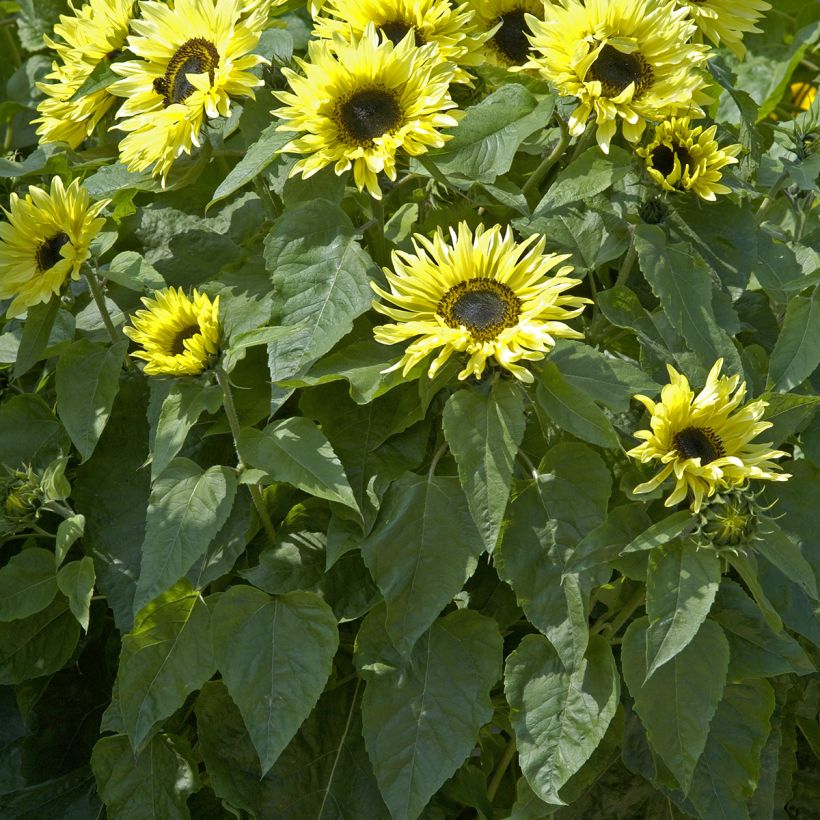

Flowering
Foliage
Plant habit
Botanical data
Helianthus
annuus
Garden Statement
Asteraceae
Sunflower, Common Sunflower
Cultivar or hybrid
Other Sunflower seeds
Planting and care
The Sunflower can be sown: either in March-April, in buckets, under shelter, for the preparation of young plants that can be placed in your flowerbeds after the last frost.
Or from April to June, after the frost, directly in place. In a sunny location in your garden.
In order to enjoy beautiful fresh flowers throughout the season, we recommend staggering your sowings as much as possible. Sow your seeds in groups of 2, at a depth of 1cm (0.5in) and spaced 50cm (20in) apart. After 20 days, remove the weaker shoot and keep only one per location. To promote branching of the main stem, you can cut the terminal bud when the plant has developed its fifth leaf. The strong growth of the Sunflower will require regular watering. When the plant reaches about 1m (3ft), watering can be stopped and it can rely on rainfall even if it is scarce. It takes 60 days between sowing and flowering. Protect your sowings from attacks by snails and slugs, which are fond of these young plants.
Sowing period
Intended location
This item has not been reviewed yet - be the first to leave a review about it.
Flower seeds
Haven't found what you were looking for?
Hardiness is the lowest winter temperature a plant can endure without suffering serious damage or even dying. However, hardiness is affected by location (a sheltered area, such as a patio), protection (winter cover) and soil type (hardiness is improved by well-drained soil).

Photo Sharing Terms & Conditions
In order to encourage gardeners to interact and share their experiences, Promesse de fleurs offers various media enabling content to be uploaded onto its Site - in particular via the ‘Photo sharing’ module.
The User agrees to refrain from:
- Posting any content that is illegal, prejudicial, insulting, racist, inciteful to hatred, revisionist, contrary to public decency, that infringes on privacy or on the privacy rights of third parties, in particular the publicity rights of persons and goods, intellectual property rights, or the right to privacy.
- Submitting content on behalf of a third party;
- Impersonate the identity of a third party and/or publish any personal information about a third party;
In general, the User undertakes to refrain from any unethical behaviour.
All Content (in particular text, comments, files, images, photos, videos, creative works, etc.), which may be subject to property or intellectual property rights, image or other private rights, shall remain the property of the User, subject to the limited rights granted by the terms of the licence granted by Promesse de fleurs as stated below. Users are at liberty to publish or not to publish such Content on the Site, notably via the ‘Photo Sharing’ facility, and accept that this Content shall be made public and freely accessible, notably on the Internet.
Users further acknowledge, undertake to have ,and guarantee that they hold all necessary rights and permissions to publish such material on the Site, in particular with regard to the legislation in force pertaining to any privacy, property, intellectual property, image, or contractual rights, or rights of any other nature. By publishing such Content on the Site, Users acknowledge accepting full liability as publishers of the Content within the meaning of the law, and grant Promesse de fleurs, free of charge, an inclusive, worldwide licence for the said Content for the entire duration of its publication, including all reproduction, representation, up/downloading, displaying, performing, transmission, and storage rights.
Users also grant permission for their name to be linked to the Content and accept that this link may not always be made available.
By engaging in posting material, Users consent to their Content becoming automatically accessible on the Internet, in particular on other sites and/or blogs and/or web pages of the Promesse de fleurs site, including in particular social pages and the Promesse de fleurs catalogue.
Users may secure the removal of entrusted content free of charge by issuing a simple request via our contact form.
The flowering period indicated on our website applies to countries and regions located in USDA zone 8 (France, the United Kingdom, Ireland, the Netherlands, etc.)
It will vary according to where you live:
- In zones 9 to 10 (Italy, Spain, Greece, etc.), flowering will occur about 2 to 4 weeks earlier.
- In zones 6 to 7 (Germany, Poland, Slovenia, and lower mountainous regions), flowering will be delayed by 2 to 3 weeks.
- In zone 5 (Central Europe, Scandinavia), blooming will be delayed by 3 to 5 weeks.
In temperate climates, pruning of spring-flowering shrubs (forsythia, spireas, etc.) should be done just after flowering.
Pruning of summer-flowering shrubs (Indian Lilac, Perovskia, etc.) can be done in winter or spring.
In cold regions as well as with frost-sensitive plants, avoid pruning too early when severe frosts may still occur.
The planting period indicated on our website applies to countries and regions located in USDA zone 8 (France, United Kingdom, Ireland, Netherlands).
It will vary according to where you live:
- In Mediterranean zones (Marseille, Madrid, Milan, etc.), autumn and winter are the best planting periods.
- In continental zones (Strasbourg, Munich, Vienna, etc.), delay planting by 2 to 3 weeks in spring and bring it forward by 2 to 4 weeks in autumn.
- In mountainous regions (the Alps, Pyrenees, Carpathians, etc.), it is best to plant in late spring (May-June) or late summer (August-September).
The harvesting period indicated on our website applies to countries and regions in USDA zone 8 (France, England, Ireland, the Netherlands).
In colder areas (Scandinavia, Poland, Austria...) fruit and vegetable harvests are likely to be delayed by 3-4 weeks.
In warmer areas (Italy, Spain, Greece, etc.), harvesting will probably take place earlier, depending on weather conditions.
The sowing periods indicated on our website apply to countries and regions within USDA Zone 8 (France, UK, Ireland, Netherlands).
In colder areas (Scandinavia, Poland, Austria...), delay any outdoor sowing by 3-4 weeks, or sow under glass.
In warmer climes (Italy, Spain, Greece, etc.), bring outdoor sowing forward by a few weeks.

































